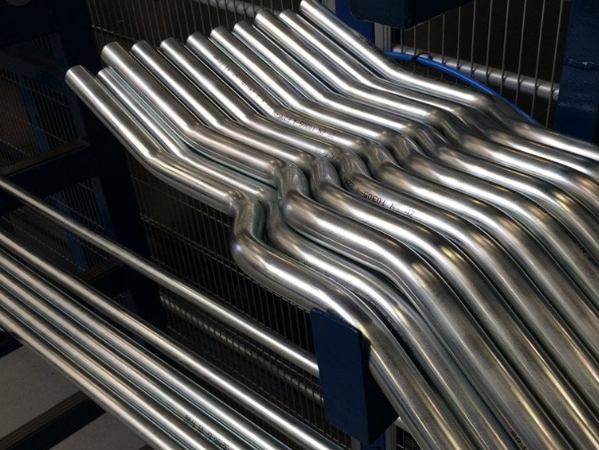Although the hydraulic pipeline bears high pressure and the working environment is harsh,
oil leakage can be prevented and avoided. The following preventive measures should be taken during use and maintenance.
1. Check the quality of the pipeline carefully, and strictly prohibit the use of unqualified pipelines
When repairing, the newly replaced pipeline should be carefully checked by the manufacturer, date, batch number, specified service life, and whether there are any defects. The pipeline that does not meet the requirements must not be used. When in use, always check the pipeline for wear and corrosion; in the process of use, once the rubber hose is found to be severely cracked, hardened or bubbling, it should be replaced immediately.

2. Install the pipeline correctly, and it is strictly forbidden to assemble in violation of regulations
1) Correct assembly of hose lines
When installing the hose to tighten the threads, be careful not to twist the hose, you can draw a colored line on the hose for observation; when the hose is installed in a straight line, there should be a length allowance of about 30% to meet the needs of oil temperature, tension and vibration ; The bending radius of the hose bend should be greater than 9 times the outer diameter of the hose, and the distance from the bend to the pipe joint should be at least 6 times the outer diameter of the hose; rubber hoses are best not to be used in an environment with high temperature and corrosive gas; There are many hoses in the system, which should be fixed by installing pipe clamps or separated by rubber plates.
2) Correct installation of hard pipe (
hydraulic steel tube)
The installation of hard pipes and pipes should be horizontal and vertical to minimize turns and avoid crossing; the radius of the turns should be greater than 3 to 5 times the outer diameter of the tubing; long pipes should be fixed firmly with standard pipe clamps to prevent vibration and collision; The distance between the clamps should meet the regulations. For pipelines with high vibration, the clamps should be equipped with vibration damping pads; when connecting the pipelines to the mechanical parts, first fix the auxiliary parts joints, and then fix the pipelines to prevent the pipelines from being affected. Twisted, must not be installed forcibly.
3. Properly use and maintain, and it is strictly forbidden to pollute the hydraulic system
In daily maintenance work, it is not allowed to step on, pull or press the pipeline at will, and it is not allowed to hit the pipeline with metal tools to prevent mechanical damage; hydraulic machinery or hydraulic equipment parked in the open should be covered with cloth to prevent damage. Dust, rain and snow work, water removal, drying and rust removal should be carried out in time after rain and snow; oil and dust on the surface of the pipeline should be frequently wiped to prevent pipeline corrosion; when adding oil and disassembling parts, be careful Pollution gates to prevent debris and moisture from being brought into the system. In addition, be sure to prevent harmful solvents and liquids from being spilled on the catheter.
4. Other
For pipelines with large changes in the oil temperature and ambient temperature on the equipment, thermal expansion compensation should be considered during installation to reduce the impact of thermal stress; in order to ensure the safe operation of the pipeline and extend the service life, The rubber tube should be insulated and cooled, such as wrapping the insulation layer and introducing heat dissipation air, etc. are effective measures; on the premise of meeting the system performance requirements, consider installing a suitable accumulator in a place that is prone to hydraulic shock Or vibration absorber, and try to use hydraulic components with buffer devices to reduce hydraulic pulsation and prevent hydraulic shock.













 Eastern Steel Manufacturing Co.,Ltd not only improve product production and sales services, but also provide additional value-added services. As long as you need, we can complete your specific needs together.
Eastern Steel Manufacturing Co.,Ltd not only improve product production and sales services, but also provide additional value-added services. As long as you need, we can complete your specific needs together.










